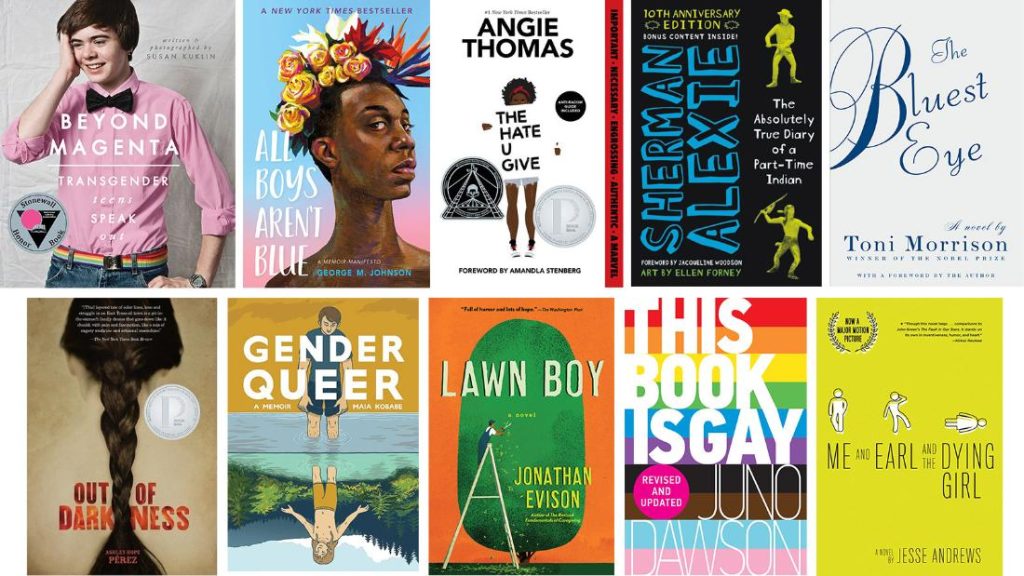
by Lev Tsitrin
If the New York Times is to be believed, then if one is to be totally honest, one has to admit that Prohibition was really directed against L.G.B.T.Q. people.
This is the gist of the logic of the New York Times’ “guest essay” penned by one Taylor Brorby, the author of “Boys and Oil: Growing Up Gay in a Fractured Land.”
To be sure, Mr. Brorby is talking about prohibition on sex-related books, not on alcohol. But this is a distinction without a difference; the analogy is perfectly sound. For, as Mr. Brorby tells us, North Dakota’s planned legislation that “would prohibit public libraries from keeping and lending “books that contain explicit sexual material”” and “prohibits organizations open to minors from displaying “objectionable materials,” whether image or text, including visuals or descriptions of “nude or partially denuded human figures posed or presented in a manner to exploit sex, lust or perversion”” is, in reality, but a thinly-disguised attack on L.G.B.T.Q. people.
Engrossed as he is in his sense of victimhood, Mr. Brorby does not notice that there may be a legitimate concern for young people’s exposure to age-inappropriate material. Perhaps, being what he is, Mr. Brorby finds such concern perverse. However, it may be, he tells us: “let’s be honest: It’s not the Venus de Milo these laws are going to come for first. It’s books with L.G.B.T.Q. stories, or books by L.G.B.T.Q. authors — the kind of books that have provided so many queer young people with a lifeline when they needed it most.”
Leaving aside a chicken-and-egg question of whether “queer people” generate “this kind of books” or “this kind of books” generates “queer people” (i.e. whether without being exposed to “queer” ideas fewer people would grow to be “queer”), what’s interesting in Mr. Brorby’s reasoning is how he uses statistics to back the idea that the real targets of the legislators are L.G.B.T.Q. books: “According to PEN America, 41 percent of books banned throughout the 2021-22 school year contained L.G.B.T.Q. themes, protagonists or prominent secondary characters.” Doesn’t this tell you something? Isn’t it clear what kind of books the legislators are out to ban?
But no, Mr. Brorby — you assumption that the disproportionate statistics indicates bias is totally off the mark — for a very simple reason that only a tiny percentage of non-L.G.B.T.Q. books deal with sex, but 100% L.G.B.T.Q. books deal with it — else, they would not be L.G.B.T.Q. books. Hence, the seemingly too-high statistics of L.G.B.T.Q. books among the books that were banned from the public libraries is merely a testimony to their disproportionate — or better said, overwhelming — concern with sex. In the universe of non-L.G.B.T.Q. books — the books on history, philosophy, botany, astronomy, art, politics, crafts — how many deal with sex? A tiny percentage. So comparing the percentage of banned L.G.B.T.Q. books to the percentage of non-L.G.B.T.Q. books is the abuse of statistics at its worst. Remember the “three kinds of lies — lies, damned lies, and statistics”? Well, Mr. Brorby’s reasoning is the Exhibit A of the latter kind of lie.
It is like complaining that Iranian storage site with a hundred tons of uranium ore gets less attention than a room where ten pounds of uranium enriched to 90% purity is being stored. And yet, this makes perfect sense. The latter — the concentrated uranium — can be quickly turned into a bomb while in the ore, its bomb-making portion is too diluted to cause immediate concern. The same goes for sex concentration in L.G.B.T.Q. and non-L.G.B.T.Q. books. L.G.B.T.Q. books are saturated with it; the vast majority of non-L.G.B.T.Q. books don’t mention it at all. Hence, the statistics that, to Mr. Brorby — and to New York Times‘ opinion editors — proves discrimination, in fact proves nothing of a kind.
I am often surprised at the outright drivel that the New York Times chooses to publish in its opinion section, Mr. Brorby’s “guest essay” being a worthy addition to that heap of garbage. Why would the paper publish this stuff — especially when the burning issues like judicial fraud (which our “paper of record” adamantly refuses to even mention) go unreported, is beyond me.
Sigmund Freud is often quoted as saying that “sometimes a cigar is just a cigar.” He did not give a numeric value to the “sometimes” — and I think he was completely wrong: the word should have been “predominantly.” Mr. Brorby’s pseudo-statistics of anti-L.G.B.T.Q. bias is one other instance of a cigar that is ostensibly not a cigar turns out to be “just a cigar” after all. Why the Opinion editor of the New York Times glossed over Mr. Brorby’s flagrant abuse of statistics to produce a lie is part of the great mystery: our “paper of record,” the New York Times, is so often irrational, is so often dishonest, is so often hypocritical. Why would this be so, I wonder?
- Like
- Digg
- Del
- Tumblr
- VKontakte
- Buffer
- Love This
- Odnoklassniki
- Meneame
- Blogger
- Amazon
- Yahoo Mail
- Gmail
- AOL
- Newsvine
- HackerNews
- Evernote
- MySpace
- Mail.ru
- Viadeo
- Line
- Comments
- Yummly
- SMS
- Viber
- Telegram
- Subscribe
- Skype
- Facebook Messenger
- Kakao
- LiveJournal
- Yammer
- Edgar
- Fintel
- Mix
- Instapaper
- Copy Link










One Response
Good riposte, Lev.